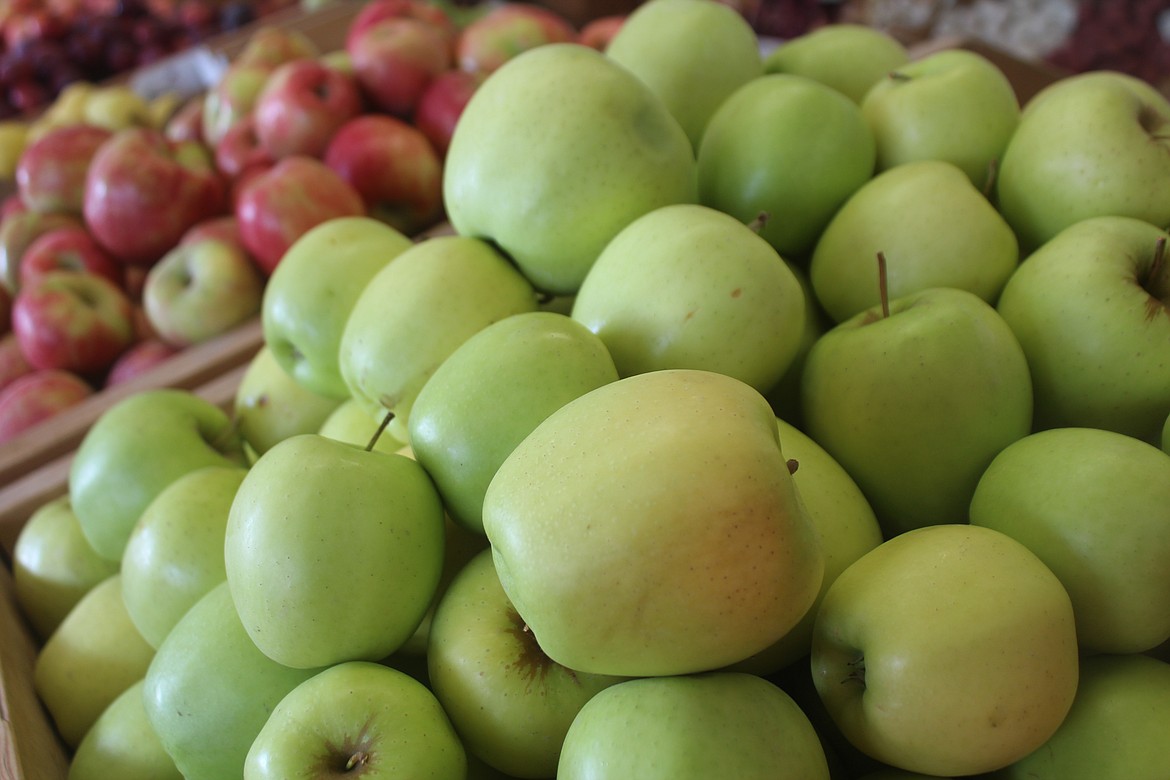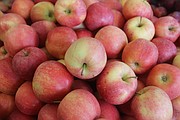‘Mother Nature was not kind’: Bad weather reduces 2022 Washington apple harvest
QUINCY — Weather that was too hot, then too cold and stormy, contributed to making the 2022 apple crop one of the smallest in the last 15 years.
“Our Dec. 1 storage report put the crop at 100.8 million (40-pound) boxes. Which is down from our August forecast,” said Tim Kovis, director of communications and events for the Washington State Tree Fruit Association.
Kovis said the fruit that eventually was harvested in 2022 began to develop in June and July 2021.
“We had that high heat, and that’s when the buds were beginning to develop,” he said.
Spring 2022 was chilly and wet.
“We had that late snow, wind, rain, cold snap right before Easter this year, and that was problematic,” Kovis said.
The mid-April snowstorm hit some areas where fruit was in bloom, around Yakima and south of Interstate 90 in particular.
“And then in the later spring we had a number of hail events, kind of I-90 north, that really affected (the fruit),” Kovis said. “Talking to one grower, they thought they got through the snow fairly decently and then – I believe it was May – they had a couple of hail events that took out half their crop.
“Our industry’s partner, Mother Nature, was not kind to us this spring,” he said.
The growing conditions resulted in a crop that was pretty darn short.
“In 2009, our crop was 102 million boxes, and in 2007 we were at 97 million boxes,” he said. “So not quite 20 years, but it’s been a while since we were down at these levels.”
Historically, a short crop means improved returns for growers who do have fruit to sell. Apples are sold year-round, so the question of profitability won’t be definitively answered until next fall.
“It’s going to be a little too early to know what the complete fallout is,” Kovis said. “We’re at the beginning of marketing, and you never know what storage issues (will have an effect). The crop size could still move as packouts go up and down. Until it’s all sold we won’t know exactly, but this is where our industry anticipates we will be at,” Kovis said.
The short crop comes at a time when disruptions in overseas markets and congestion at West Coast ports mean more fruit may be entering the domestic market, Kovis said.
“A smaller apple crop needing to have a higher percentage go into the domestic (market) is not terrible. You’re not having to displace varieties. So that is a saving grace; prices should be strong,” Kovis said.
Inflation has hit the apple growers just like it’s hit all businesses, and Kovis said the ultimate impact of inflation on profitability won’t be clear until the crop is sold.
The apples that are getting to market are good quality, he said.
“What’s going to get to the consumer is going to be a great quality piece of fruit, there’s just going to be less of them,” Kovis said.




